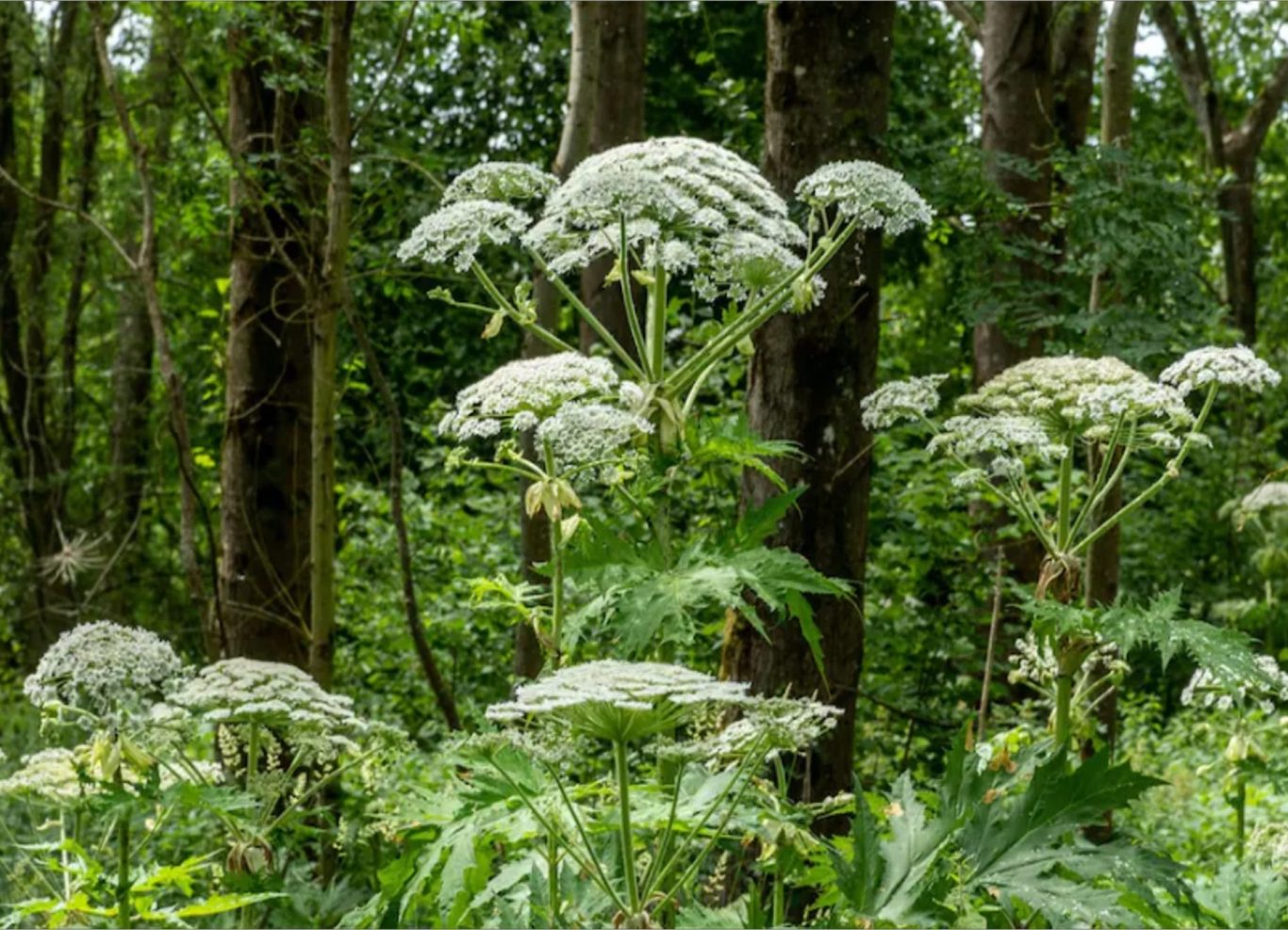Giant Hogweed - Heracleum mantegazzianum
Key Findings
This relative of Scotland’s native Cow Parsley, Giant Hogweed (fig. 1) can grow to 5m tall (Booy, Wade and White, n.d.). In Scotland, the species commonly grows in low-lying areas and along riverbanks (Keating, 2022).
Native Range and Introduction: The native range of the Giant Hogweed is Southwest Asia - Western Greater Caucasus to be specific (NNSS, 2019). The species was intentionally introduced to the UK in the 1800s, being planted in gardens as an ornamental feature. By 1828, the first example of a wild growing Giant Hogweed plant was reported, found in Cambridgeshire (NNSS, 2019). Since then, it has spread throughout the UK.
Scottish Distribution: This map (fig. 2) from NBN Atlas (2024) shows just how commonplace the species has become in the UK, even reaching as remote a place as Shetland. Data from NESBReC (2022) demonstrates the distribution of this species around the Northeast Coast from 2000-2022 (fig. 3). It appears common along rivers nearer to their mouth, such as along the Don, the Dee and the Deveron. While on this map Giant Hogweed appears less prevalent further South, this is due to the scope of data collection and is not reflective of real patterns – the NESBReC operates mostly in the Aberdeenshire and Cairngorms area (from Draft Document).
Reproduction: The rapid spread of Giant Hogweed was facilitated the plant’s efficient reproductive process. They can self-fertilise and produce as many as 50,000 seeds each (SISI, n.d.). These seeds may be transported by water, explaining the clustering of Giant Hogweed around river mouths.
Risks: Giant Hogweed poses risks to both humans and plantlife. For one thing, the size and density to which groups of the plant grow can smother other species, preventing native species from growing successfully (SISI, n.d.). Additionally, the sap of the Giant Hogweed is described as ‘phototoxic’ (Brunning, 2017). This means if the sap gets onto human skin and is then exposed to the sun, it will cause burns and blistering - an effect potentially lasting for years (Keating, 2022). The toxin is most concentrated in the leaves of the plant (Brunning, 2017), making the removal process especially difficult.
Control Methods: For the last 45 years it has been illegal to promote the growth of Giant Hogweed in the UK (Royal Horticultural Society, n.d.). However, for the Giant Hogweed which grows naturally, various measures can be taken to reduce its prevalence. Current control techniques include herbicide application, cutting of flowering heads, and digging up from the roots (SISI, n.d.). Additionally, recent trials have shown the success of sheep grazing in areas infested with the species – sheep are not affected by the sap toxicity and seem to enjoy grazing on the plant (NatureScot, 2023).

Fig. 1: Appleby, 2023 - Multiple Giant Hogweed plants

Fig. 2: NBN Atlas (2024) – Records of Giant Hogweed Sightings from the 1800s to Today.

Fig. 3: NESBReC (2022) – Giant Hogweed distribution in the East Grampian area from 2000 – 2022.
Notes
Linked Information Sheets
Key sources of Information
Appleby, M. (2023) ‘The gangers of giant hogweed, and how to tackle it’, The Telegraph.
Booy, O., Wade M., and White, V (n.d.) Giant Hogweed.
Brunning, A. (2017) How Does Giant Hogweed Cause Skin Burns?
Keating, H. (2022) Giant Hogweed: The Facts.
NatureScot (2023) Trial finds woolly warriors effective against giant hogweed.
NBN Atlas (2024) (SPECIES: Heracleum mantegazzianum AND occurrence_status:present).
NNSS (Non-native Species Secretariat) (2019) Giant Hogweed Heracleum mantegazzianum.
Royal Horticultural Society (n.d.) Giant Hogweed.
SISI (Scottish Invasive Species Initiative) (n.d.) Giant Hogweed.
Reviewed on/by
Status
Live. Next update due 22/11/25
To report errors, highlight new data, or discuss alternative interpretations, please complete the form below and we will aim to respond to you within 28 days
Contact us
Telephone: 07971149117
E-mail: ian.hay@stateofthecoast.scot
We need your consent to load the translations
We use a third-party service to translate the website content that may collect data about your activity. Please review the details in the privacy policy and accept the service to view the translations.

